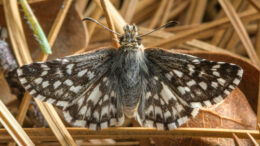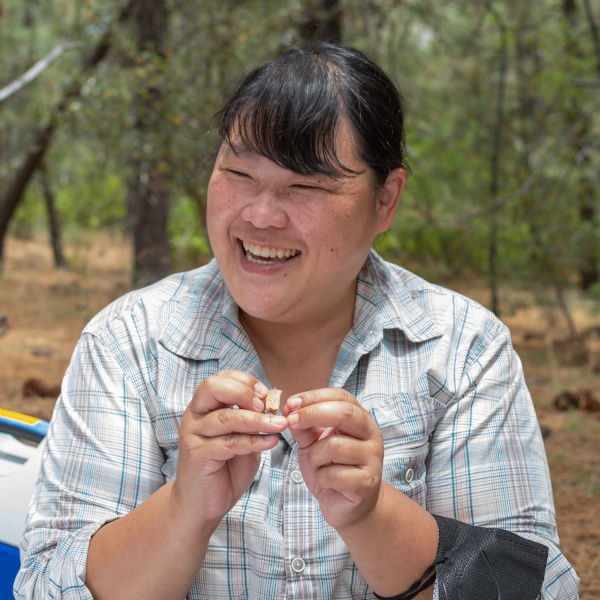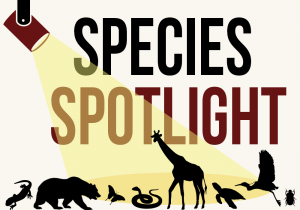 Since 2021 the San Diego Zoo Entomology team has reared larvae of Laguna Mountains skippers in the Butterfly Conservation Lab at the San Diego Zoo. Adult female butterflies collected from Palomar Mountain lay eggs in the lab each spring, and we release them as larvae or pupae at the reintroduction site in the Laguna Mountains Recreation Area. This process is called “headstarting.” Rearing the larvae in the lab allows us to protect them from threats at a vulnerable life stage and to gather life history and behavioral data — nearly impossible to capture in the field — that inform future efforts.
Since 2021 the San Diego Zoo Entomology team has reared larvae of Laguna Mountains skippers in the Butterfly Conservation Lab at the San Diego Zoo. Adult female butterflies collected from Palomar Mountain lay eggs in the lab each spring, and we release them as larvae or pupae at the reintroduction site in the Laguna Mountains Recreation Area. This process is called “headstarting.” Rearing the larvae in the lab allows us to protect them from threats at a vulnerable life stage and to gather life history and behavioral data — nearly impossible to capture in the field — that inform future efforts.
Species name:
Laguna Mountains skipper, Pyrgus ruralis lagunae (LMS for short)
Description:
This tiny butterfly has a wingspan measuring about 1 inch across, with a checkered white and grayish-brown coloration. Though it isn’t likely to draw much attention from non-lepidopterists, like many small butterflies it’s a critical component of its native ecosystem’s food web. Unfortunately only one such ecosystem remains in the United States.
Where it’s found:
Montane meadows of San Diego County in Southern California. Though it’s no longer found in the Laguna Mountains, a small population persists in the Palomar Mountain area. The Laguna Mountains skipper requires the presence of its host plant Horkelia clevelandii, a perennial herb in the rose family, to survive.
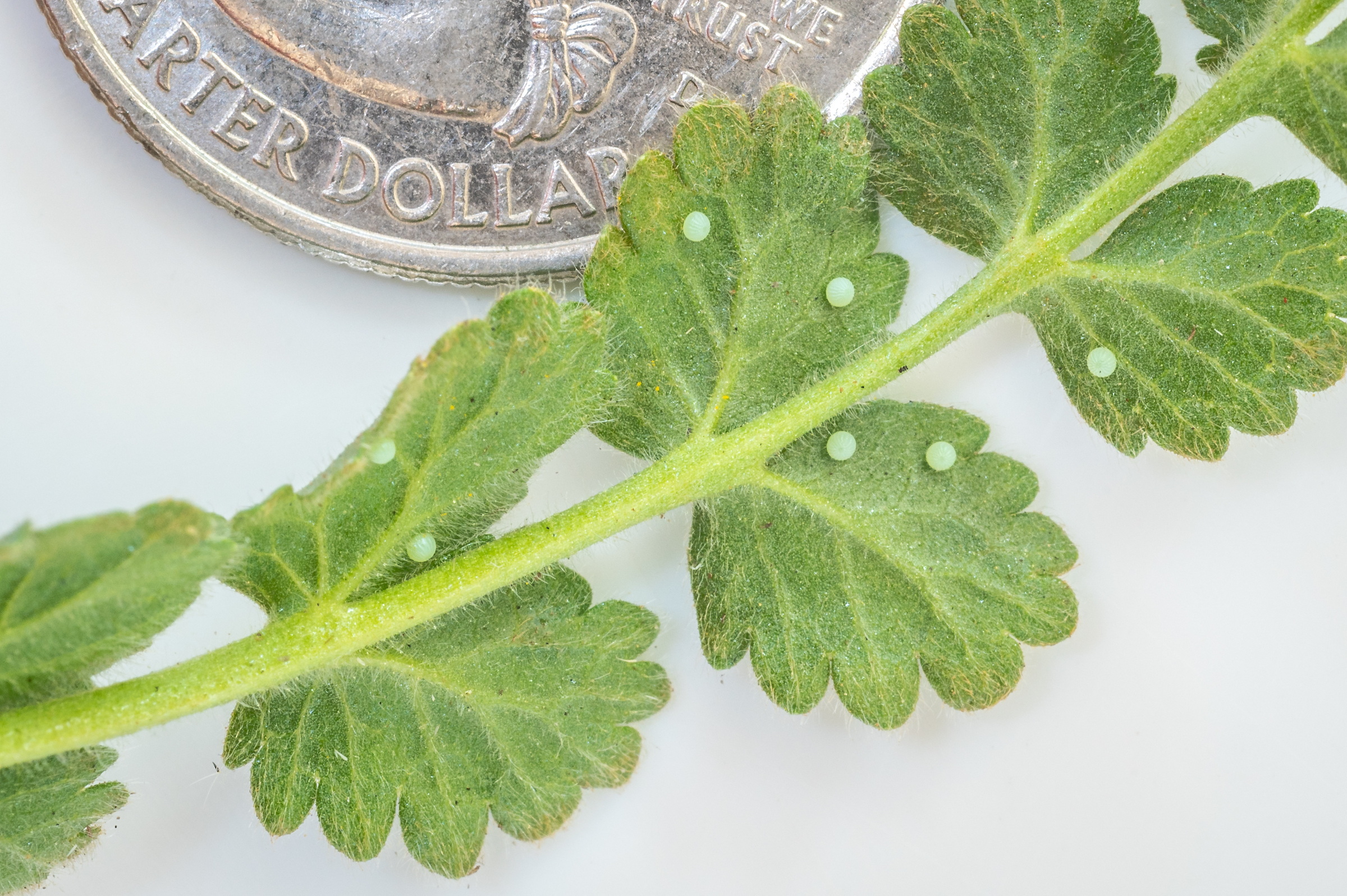
IUCN Red List status:
Like most insects Laguna Mountains skippers have not been assessed by IUCN for the Red List. However, they’re protected by the U.S. Endangered Species Act and appears on the California Department of Fish and Wildlife’s list of California Terrestrial and Vernal Pool Invertebrates of Conservation Priority.
Major threats:
Habitat destruction, drought, climate change, and related phenological mismatch between butterflies and host/nectar plants.
Notable conservation programs or legal protections:
These butterflies were protected under the Endangered Species Act in 1997. The San Diego Zoo Wildlife Alliance, U.S. Fish and Wildlife Service, USDA Forest Service, Wildspring Ecology, Osborne Biological Consulting and the Urban Wildlands Group have collaborated to coordinate head starting, release and monitoring of this species, in hopes of facilitating their recovery. As the result of this partnership, the Laguna Mountains skipper butterfly took flight in its former range in 2021 for the first time since the late 1990s.
My favorite experience:
Not many people get to bear witness to every life stage of an endangered species, especially one so tiny. I remember a newly hatched LMS larva that became entangled in webbing from a spider mite and needed help getting free, something that was only possible to detect under a microscope and required a tiny paintbrush to correct! We learned quickly that helping this species required getting small — really, really small.
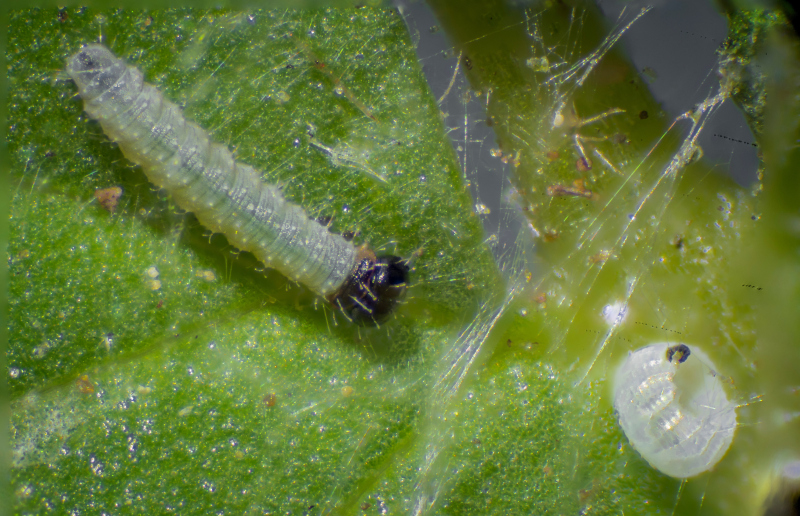
What else do we need to understand or do to protect this species?
As is the case for many endangered and threatened species, habitat loss is the main culprit in the decline of the Laguna Mountains skipper. Reintroduction efforts are nascent and adaptive, and progress is made each season to identify the best approach to recovery.
Key research:

Share your stories:
Do you live in or near a threatened habitat or community, or have you worked to study or protect endangered wildlife? You’re invited to share your stories in our ongoing features, Protect This Place and Species Spotlight.

